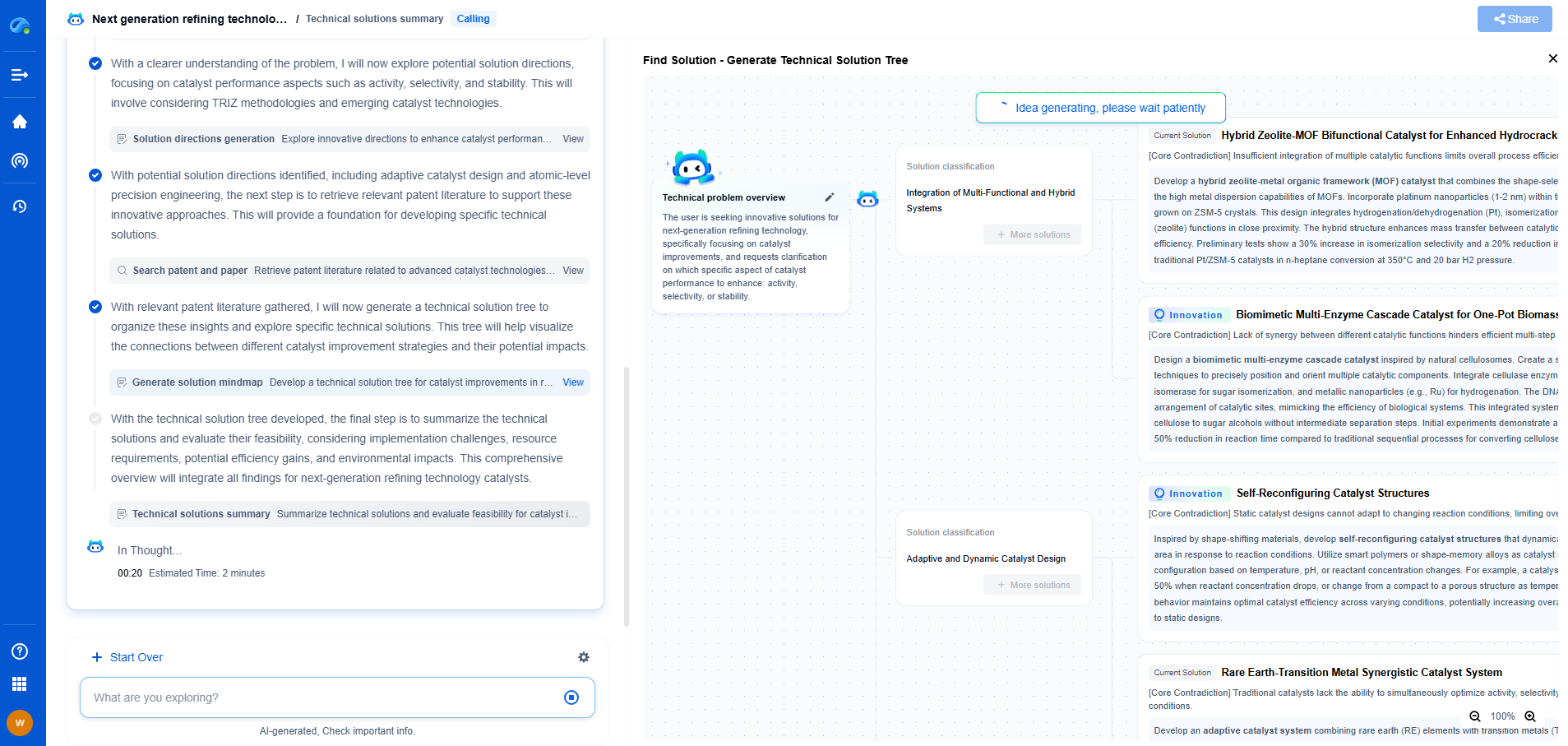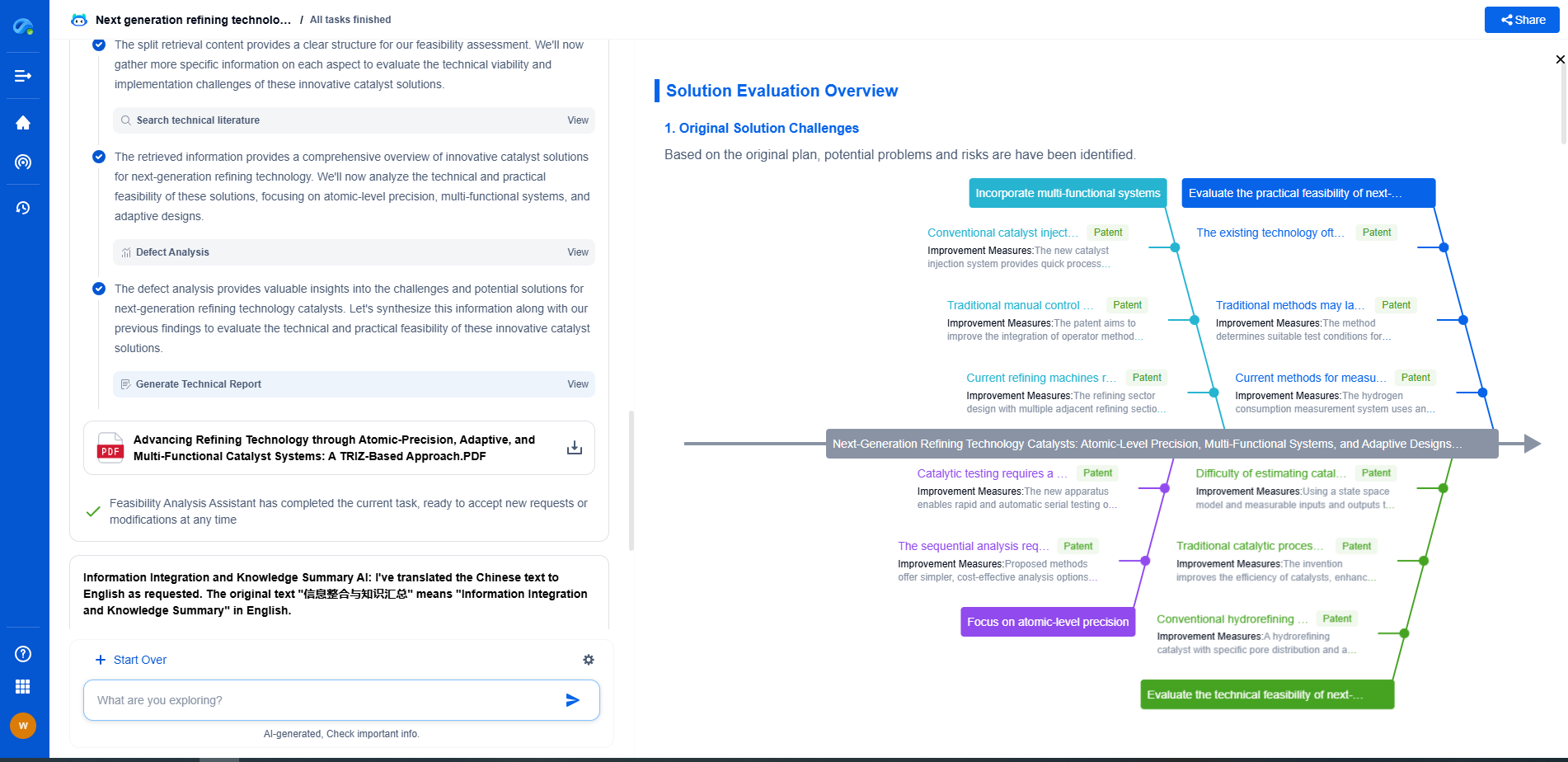Novolac Resist Filtering: Nanoparticle Removal Before Spin-Coating
JUL 28, 2025 |
In the production of high-precision microelectronic devices, the spin-coating technique is widely used to apply thin films of photoresist materials onto substrates. One of the commonly used photoresists is novolac resin, which is appreciated for its excellent thermal and chemical resistance. However, ensuring the uniformity and quality of the film during spin-coating involves addressing several challenges, one of which is the presence of nanoparticles in the resist formulation. These particles can lead to defects, impacting the performance of the final product. Therefore, implementing an effective filtering process to remove nanoparticles before spin-coating is crucial.
Understanding Novolac Resist and Its Role
Novolac resists are a type of phenolic resin commonly used in the lithography process to create fine patterns on substrates. These resists provide exceptional resolution and are sensitive to electron and deep ultraviolet radiation, making them ideal for microfabrication. However, the intrinsic properties of novolac resins, such as viscosity and molecular weight, can contribute to the formation of nanoparticles during synthesis and storage. These nanoparticles, if not removed, can cause coating defects like pinholes or film thickness variations.
Challenges of Nanoparticle Presence in Spin-Coating
The presence of nanoparticles in novolac resist formulations poses significant challenges. These particles can aggregate to form larger clusters, leading to defects in the coated film that can adversely affect the device's performance and yield. Furthermore, nanoparticles can interfere with the resist's sensitivity and resolution by scattering light during the exposure process, reducing the quality of the developed patterns. Therefore, addressing nanoparticle contamination is essential for achieving high-quality coatings.
Strategies for Nanoparticle Removal
To effectively remove nanoparticles from novolac resists, several filtration techniques can be employed. Among the most common are microfiltration and ultrafiltration, which can efficiently separate fine particles from the liquid resist. Microfiltration utilizes membranes with pore sizes typically in the range of 0.1 to 10 micrometers, effectively removing larger particle aggregates. Ultrafiltration, with smaller pore sizes, can target nanoparticles more precisely, ensuring a higher degree of purification.
Another effective method is centrifugal filtration, where centrifugal force is used to facilitate the separation of nanoparticles from the resist. This method is particularly useful for removing particles that are difficult to separate through conventional filtration techniques due to their similar size to the resin molecules.
Implementing Proper Filtering Techniques
When implementing nanoparticle filtering techniques, it is essential to consider factors such as filter material compatibility, pore size selection, and process parameters to ensure optimal results. Proprietary filters designed specifically for photoresist applications are often used to maximize efficiency and prevent contamination from the filters themselves.
Moreover, maintaining a controlled environment with minimal exposure to dust and contaminants is crucial during the filtering and spin-coating processes. Ensuring that the equipment used in these processes is regularly cleaned and maintained can further help in achieving defect-free coatings.
Conclusion
In conclusion, filtering novolac resists to remove nanoparticles is a critical step before spin-coating to ensure the production of high-quality microelectronic devices. By understanding the nature of novolac resists and employing effective filtration strategies, manufacturers can significantly reduce coating defects, enhance pattern resolution, and improve the overall performance of the final product. As technology continues to advance, further innovations in filtration techniques will likely emerge, offering even greater precision in the fabrication of microelectronic devices.
As photolithography continues to push the boundaries of nanoscale patterning, from EUV and DUV advancements to multi-patterning and maskless lithography, innovation cycles are accelerating—and the IP landscape is becoming more complex than ever.
Patsnap Eureka, our intelligent AI assistant built for R&D professionals in high-tech sectors, empowers you with real-time expert-level analysis, technology roadmap exploration, and strategic mapping of core patents—all within a seamless, user-friendly interface.
Whether you're optimizing lithography depth of focus or exploring new materials for sub-3nm nodes, Patsnap Eureka empowers you to make smarter decisions, faster—combining AI efficiency with domain-specific insight.
💡 Start your free trial today and see how Eureka transforms how you discover, evaluate, and act on innovation in photolithography—from idea to impact.
- R&D
- Intellectual Property
- Life Sciences
- Materials
- Tech Scout
- Unparalleled Data Quality
- Higher Quality Content
- 60% Fewer Hallucinations
Browse by: Latest US Patents, China's latest patents, Technical Efficacy Thesaurus, Application Domain, Technology Topic, Popular Technical Reports.
© 2025 PatSnap. All rights reserved.Legal|Privacy policy|Modern Slavery Act Transparency Statement|Sitemap|About US| Contact US: help@patsnap.com

